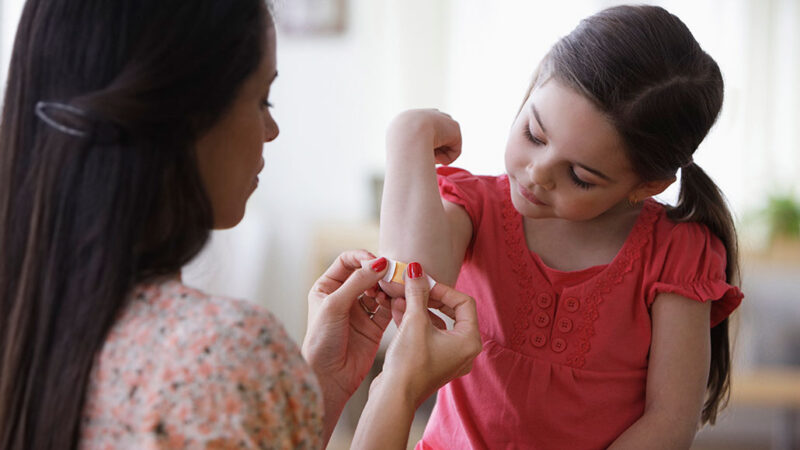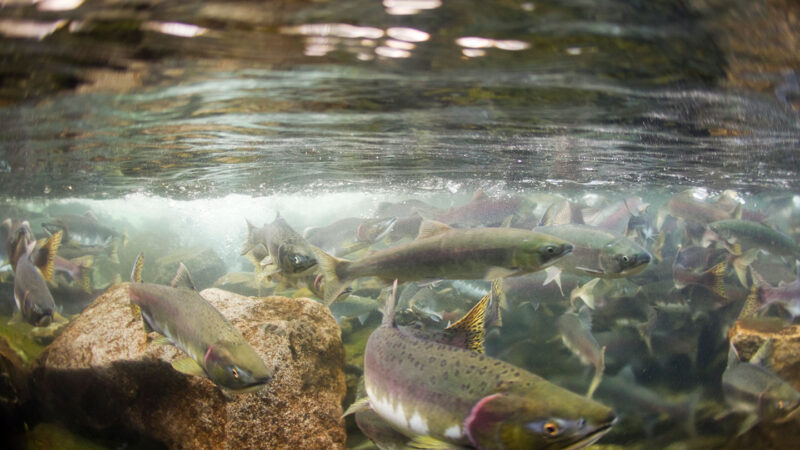When you break a bone or scrape an elbow, your body calls in healing cells. That S.O.S. takes the form of an electrical signal. A new gel that oozes like slime might someday help us heal faster by boosting that call.
The gel is piezoelectric (PEE-zoh-ee-LEK-trik). That means it generates electricity when squeezed or stretched, says Erica Pensini. An engineer, she works at the University of Guelph in Ontario, Canada.
Lots of materials in nature act this way, Pensini says. Our skin, bones, tendons and fingernails are all piezoelectric. Some humanmade materials are, too. Robots with piezoelectric skin, for instance, can “feel” touch by detecting the electrical signals it produces.
But the new goo shows special promise in medicine, Pensini says. Unlike many engineered materials, it holds lots of water — like the tissues in our bodies. And all of this gel’s ingredients come from biological sources.
Pensini imagines that in the future, you could put a piezoelectric patch containing the gel on a wound to supercharge its healing. As the body’s natural motions squish and stretch the material, it could trigger signals that mimic the injured area’s call for help.
A happy accident
Pensini created the new gel by accident. For an experiment, she was mixing water and amines — chemical compounds commonly used in shampoos and lotions. Then she added oleic acid, a component of fats such as olive oil. Her goal had been to see if oleic acid captured the amines. But as Pensini mixed the sample, something else happened: It morphed into a gel.

Intrigued, her team took a close look at the gel’s electrical properties. In one test, they stuck metal electrodes into opposite sides of the goo. Then they squished the gel between two pieces of glass. Zap! The team measured a teeny jolt of electricity moving through the electrodes. The gel was piezoelectric.
With so much water in the gel, Pensini realized its potential for first aid. All three ingredients were pretty human-friendly. But amines can sometimes irritate the skin. So she swapped them out for amino acids, the building blocks of proteins. Pensini knew these amino acids, which are found in the body, should be safe for people.
That swap didn’t harm the goo’s zapping power. “Both materials are piezoelectric,” she says. In that aspect, “They are not all that different.”
How much electricity do you get per squish? That depends on how much gel you deform, Pensini says. If you compress a pea-sized lump to half its starting length, you might generate a few microamps of current. For perspective, you could get nearly a million times more from a standard AA battery.
Fortunately, Pensini notes, processes in the human body use much lower levels of electricity. And you can always deform more gel to get a bigger jolt.
Pensini’s group shared its findings in the past year in the Journal of Molecular Liquids and iScience.
How the ingredients work together
Pensini made gels with different recipes, using various amino acids, amines and amounts of water. Then her group measured the piezoelectricity of each with the same squish test.
The scientists also hit the gels with an X-ray beam to see how that radiation scattered off the goo. They studied how the samples interacted with other types of light, too. And they ran computer models and zoomed in on the gels using a microscope. These tests revealed a lot about the gels’ structure.
The leading recipe was 90 percent water, oleic acid and lysine (an amino acid). It produced the biggest electrical signal per squeeze among the gels made with amino acids. Each ingredient played a key role in forming the gel.
Amino acids are like little batteries, Pensini explains. Each has a negative part and a positive part. If you line them all up the right way, they produce electricity — like batteries stacked inside a flashlight. But if you mix amino acids in water, they point in different directions. Nothing really happens.
Adding oleic acid to the slime proved key. It transformed the liquid into a gel that’s easier to work with, Pensini says. “If you take that gel and you stretch it, or you squish it, then you can create the alignment.” The amino acids line up to make electricity.
This only works if you mix the two ingredients in a lot of water, though. Otherwise, you end up with a brittle solid. Water also makes it easier for electricity to flow through the gel, Pensini adds.
The resulting goo has a liquid-crystal structure. Liquid crystals have some properties of a liquid and some properties of a solid. Without water, the liquid crystals didn’t form — and without that structure, the mixture wasn’t piezoelectric.
Pensini’s group is still studying how the gel’s structure impacts its performance. She hopes that this will point to the best recipe for fixing you up fast — and more.
Putting the gel into action
This material “has features that are promising for wound-care applications,” says Ashley Brown. A bioengineer, she did not take part in the project. She works at North Carolina State University and the University of North Carolina at Chapel Hill.
It’s important to see how well the gel works in healing experiments, she says. Its recipe might need tweaks for different clinical uses. “Next studies should focus on testing the materials for specific use cases,” she says.
The “slime” could be useful in other ways too, says Seung-Wuk Lee. He’s a bioengineer at the University of California, Berkeley. Like Brown, he did not work on the new gel.
Think about devices that go inside the body, such as pacemakers, Lee says. They always need an energy source, and “replacing the battery is a really big burden.” With this type of gel, there’d be no need. The body’s natural motion could power the device.
This is one in a series presenting news on technology and innovation, made possible with generous support from the Lemelson Foundation.
Do you have a science question? We can help!
Submit your question here, and we might answer it an upcoming issue of Science News Explores
















